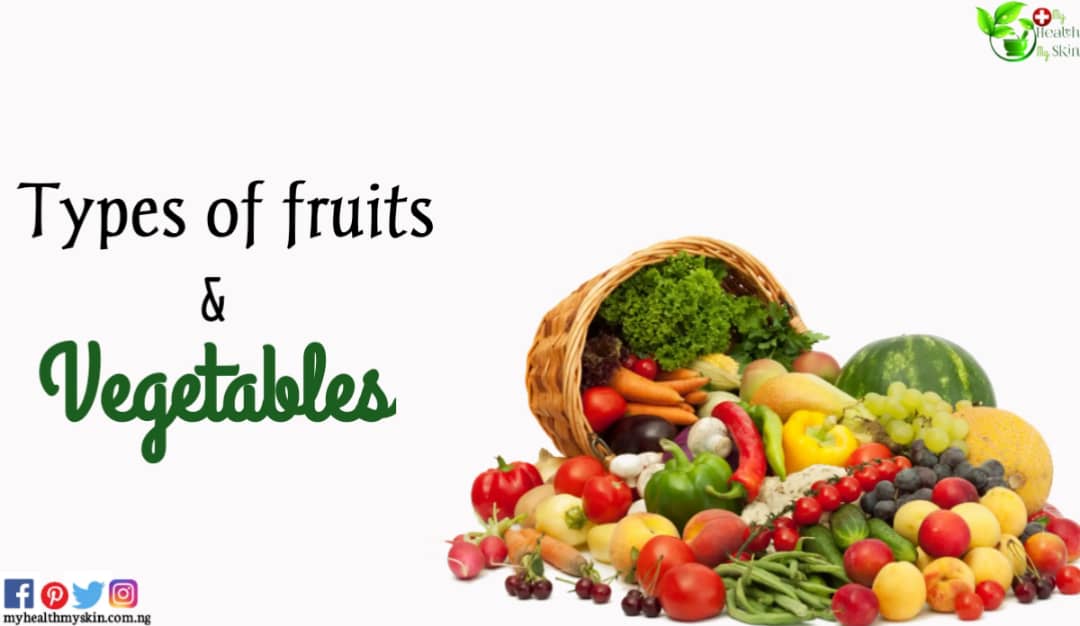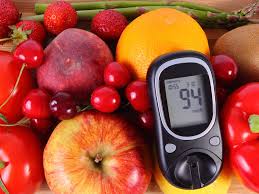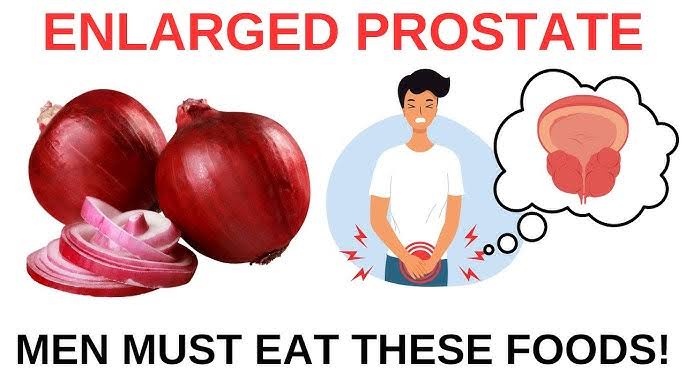Did you know that 5 servings of different types of fruits and vegetables per day is needed for the body to be in shape and maintain sound health? as the saying goes – “an apple a day, keeps the doctor away”.
Definitions – Types of Fruits and Vegetables.
A vegetable is a plant of which certain parts are eaten. Vegetables are classified into 8 families:
Flowering vegetables: artichoke, cauliflower, broccoli 🥦 etc
Leafy vegetables: Cabbage, spinach, salad🥗, endive etc
Fruit vegetables: cucumber🥒, eggplant, zucchini, tomatoes🍅 etc
Bulb vegetables: onion, shallot, garlic etc
Tuberous vegetables: Jerusalem artichoke, potato🥔, etc
Seed vegetables: beans, peas, corn, broad beans, lentils, etc
Root vegetables: radish, carrot🥕, celeriac, beet etc
Stem vegetables: asparagus, celery, fennel, etc
A fruit is what results from the transformation of a flower after it has been fertilized. It contains the seeds that will allow the plant to reproduce.
What are the types of fruits we have?
By pH profile, fruits are categorized into
Acid, Semi-Acidic, Sweet and Neutral, but by class, they are grouped into 6 families:
Stone fruits: plum, peach🍑, cherry🍒, apricot etc
Pome fruits: apple🍎, pear🍐, grape, quince etc
Berries and red fruits: blueberry, redcurrant, blackcurrant etc.
Citrus fruits: lemon🍋, grapefruit, orange🍊, clementine etc.
Nuts: walnuts, almonds, chestnuts, hazelnuts, peanuts🥜, etc.
Exotic fruits: lychee, pineapple🍍, mango🥭, papaya, etc.
These fruits are often eaten whole as snacks, taken as desserts or prepared as salads.
Preparing them as salad, gives you the advantage of trying different combinations.
Be it breakfast, dessert or lunch and even dinner, fruit salads are vitamin treats at any time of the day. They are super healthy and pleasing to savor even without complex fruits.
Fruit salad is a recipe that is easy to combine endlessly depending on the contents of your basket. It also adds color to meals and taste to snacks.
How to prepare a simple fruit salad
There are no particular sets of fruits for preparing a fruit salad, it all depends on your discretion, just ensure your combinations are of a particular PH group.
Here is a common Fruit salad combo requirement:
1 large apple
1 Banana
1 large orange
1 grapefruit
2Kiwis
200g Black grapes
1 lemon juice
50g Powdered sugar
Preparation Steps:
Rinse the fruits and peel them, don’t forget to remove the core from the apple.
Cut all the fruit into small pieces.
Put the fruit in a bowl, add the sugar and lemon juice so that they do not darken.
Mix them together.
Reserve the fruit salad in the fridge until ready to serve.
You can also add apricots, peaches or pineapples, it will certainly taste great.
Note: you can select a desired variety of fruits you want to try but do well not to miss up acid fruits with semi-acids or sweet fruits.
Let the fruits for the salad be of a particular class. The above listed fruits are all acid fruits.
Switching the fruits helps you to vary your salad without tiring or getting bored. You can also blend it with yogurt or lemon, herbs, rum or spices.
Aside been tasty and super easy to prepare, fruit salads have loads of health advantages like their nutrient content and their lightness in calories: just change the fruits or seasonings to vary the pleasures.
Here are someother ways to prepare fruit salads all season long without ever getting bored:
For easy and simple fruit salads, you can add pure flavors, and you’re done.
If you want some color, you can bet on the 100% red berry fruit salad.
If you want it rether soft, then serve the mixture with a hint of yoghurt in verrines and you’re sure of a dessert that tastes and feels good!
If you dream of original fruit salads, revisit the classics with a beet fruit salad or an avocado version.
As vitamin-packed as it is unexpected, just imagine the flavors you will get when you incorperate cornflakes into your fruit salad and spicing it up with rum. Sincerely, it’s going to rival the fruit salad à la Danette, in taste.
As for the fruit salad with watermelons, it is ideally served in artistically cut melons to dazzle even gourmets!
Other Types of Fruit Salads
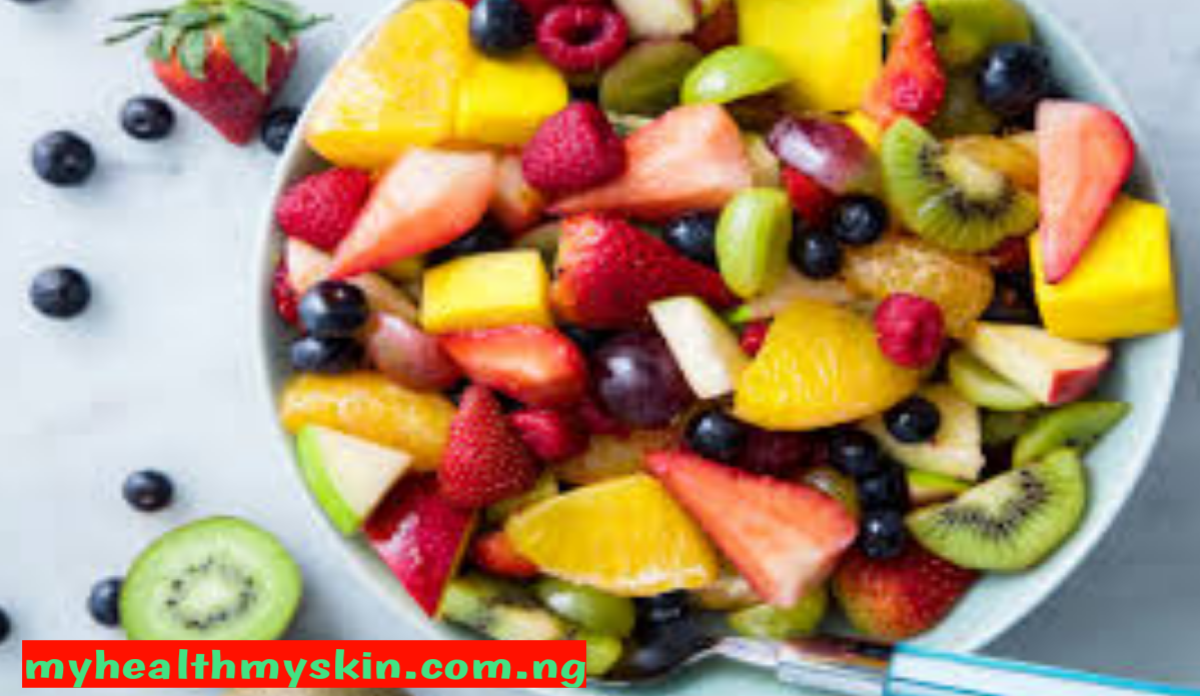
Below is a list of healthy fruit salad methods you should try out:
Fruit salad with rum
Fruit salad with cornflakes
Fruit salad with Danette
Fruit salad with yogurts
Haitian fruit salad
Refreshing fruit salad
Warm fruit salad
Sea fruit salad
Fruit salad and Sabayon
Fruit salads and salmons
Seasonal fruit salad
Watermelon Fruit Salad
Avocado fruit salad
Beet fruit salad
Red fruit salad
Exotic fruit salad with lemon juice
Fruit salad with homemade cottage cheese
Aside eating them whole or making salads out of them, the liquid from fruits are also creatively extracted and used to make rich and delicious drinks commonly called “fruit juice”.
Types of Fruit Juice
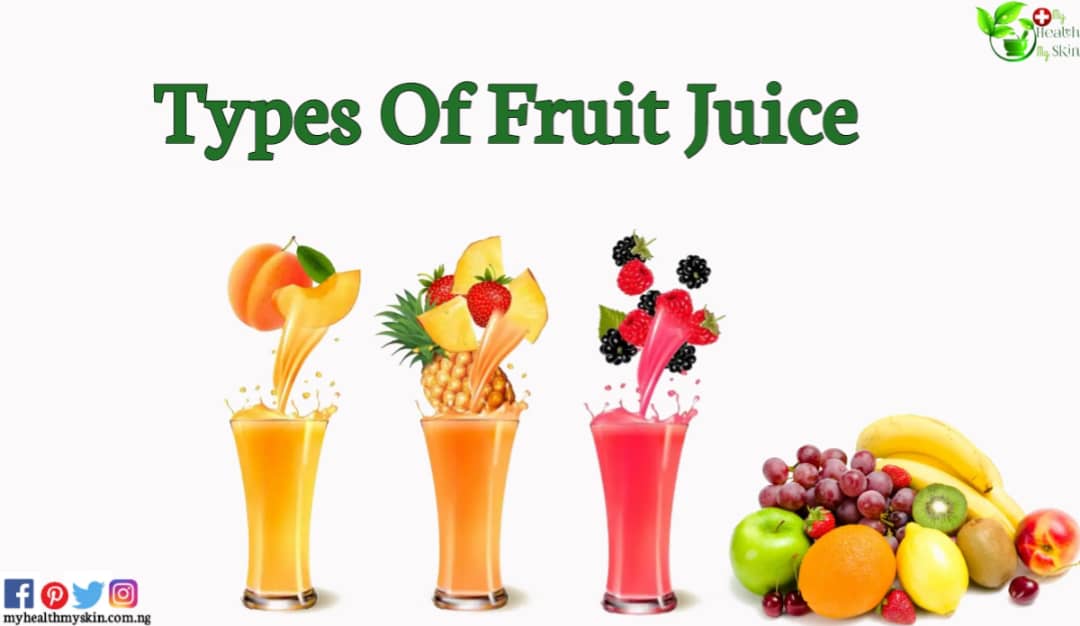
Fom Orchard to Glass. The fruit juice market groups fruit juices into four main product categories namely:
Pure fruit juice,
Concentrated fruit juice,
Nectar,
Smoothie.
All are made from the liquid contents of fruits but are distinguished by their fruit content and method of manufacture.
The Pure Fruit Juice
They are obtained by simply pressing out the liquid juice from the fruits.
There are never any added sugars, they are just purely fruits as the name implies.
The Concentrated Fruit Juice
This fruit juice is obtained by concentrating the pure fruit juice through evaporation.
The concentration facilitate longer storage and easy transport of the fruit juice.
However, the fruit juice can also be de-concentrated by reconstituting the same amount of water that was lost in the course of the concentration. It is a 100% fruit juice with no added sugar.
The Processing of concentrated juice:
Firstly the fruits are pressed.
Secondly, the juice is concentrated by evaporation.
Next the juice is reconstituted with the same volume of water that was lost through evaporation.
Finally you have a 100% fruit juice without added sugar
The Nectars
They are obtained from fruit juice and / or juice made from concentrate to which water is added with the addition of sugar or sweetener before packaging.
Generally, the fruits for making nectars are very pulpy like bananas (or apricots, peaches, pears) or sour like red fruits. It is therefore essential to dilute them with water and then sweeten them in order to obtain a drinkable juice.
The minimum fruit content of nectars is regulated and between 25 and 50% depending on the variety of the fruit.
Smoothie
In recent years, a new commercial category of fruit juice has appeared on the market: smoothies, from English “smooth” which also means “creamy”. When they only contain fruit juices and purees, these products are legally considered to be fruit juices.
Regulation of fruit juice
There seem to be frequent confusion when it gets to distinguishing between pure juices, concentrated juices and nectars as they all look alike (natural and fresh).
This simply means an individual could ignorantly take a concentrated juice, when the actual intention was a nectar. Not that the concentrated juice is not healthy, but it may not be recommended for the individual at that moment maybe for some medical reasons.
As a means to curb this challenge and also protect consumers’ right, fruit juice products are strictly supervised and governed by a specific European directive dating initially from 2001 later revised in 2012 and finally brought into national law in 2013.
Some of the directives include:
Labelling
The directives brought about the use of labels to differentiate each fruit juice from the other.
To recognize them now, all you need to do is read the packaging!
It tells you about the type of juice, its composition, characteristics of the product, how to store it (cold or at room temperature) as well as shelf life.
A sample of the label reads thus:
“Fruit juice – Pure, Concentrated or Nectar”
Content: 100% Natural fruits, pulps, lemon juice (for acidification), added sugars(if any), Preservatives and dyes (if added).
Exp. Date
Restrictions (if any).
Restricted Content (for the sake of people with Medical conditions)
Products whose label does not follow the regulatory definitions above (by virtue of the 2013 European directives – 1049), cannot be called “Fruit Juice”.
In this case, only the generic name “drink”, supplemented by descriptive terms, is authorized. Example: “fruit drink”.
Other label samples are also possible. They are sometimes defined by professional rules but can also be established by national authorities, in any case, the content of the European directives, must be indicated.
“100% pure squeezed fruit”: this statement indicates that this juice consists only of pure fruit juice.
“Fruit content 100%”: this statement means that this fruit juice from concentrate consists only of fruit juice.
“Freshly squeezed fruit juice”: this statement indicates that the fruit juice has only undergone limited microbiological stabilization treatments: like the ohmic treatment or high pressure.
Since fruits are naturally healthy and nutritious, one may surprisingly ask, of what essence are the labels or directives in general?
Well it’s all because of diverse health conditions. Individuals all exist with different health conditions and allergies, so what seems healthy for one might be poison for another.
Let’s take the diabetics for an instance.
What type of fruits can diabetics eat?
Diabetic patients are advised to take fruits but at the same time, should not take those high in sugar (sweet fruits) as this will trigger their their sugar levels.
One who suffers from Type 2 diabetes can bet on the right fruits, regular exercise and balanced diets as sure aid to fighting the diabetic condition.
In type 2 diabetes, the sufferer is often asked to limit dietary sugar intake. While reducing your consumption of chocolate or other sweets seems obvious, we sometimes forget a category of foods rich in sugar: fruits!
Since the latter are essential for a good balanced diet, favoring the less sweet can be beneficial in type 2 diabetes.
Tip: the best ways to fight type 2 diabetes is with exercise and a balanced diet.
Type 2 diabetes is manifested by a prolonged increase in blood sugar levels. Long asymptomatic, this chronic hyperglycemia has deleterious effects on the body. After 10 to 20 years of development, it has repercussions on the cardiovascular system (heart and vessels), the kidneys, the nerves and even the retina.
To know! Diabetes increases risk of developing myocardial infarction by 3 to 5
Type 2 diabetes mainly affects an elderly population (over 65 years of age) and is frequently discovered accidentally, through a control blood test.
Often there is still time to take steps to control blood sugar levels and delay complications. Losing weight and practicing physical activity is strongly recommended.
At the same time, the diet sometimes needs to be optimized. If fruits are an integral part of a balanced diet, it will be in the diabetic’s best interest to choose fruits with the lowest sugar content (mostly acid fruits).
Recommended types of fruits diabetics can eat
Strawberry: this fruit is rich in fiber and vitamin C, while containing barely 8g of sugar per 100g of fruit, making it very suitable for diabetic patients.
Peaches: in addition to their delicious taste, they are not very sugary, with just 13g / 100g of fruit;
Blackberries: they reach a maximum of 5g of sugar per 100g of fruit and they have anti-oxidant properties.
Honeydew melon (melon with light green flesh): it contains 11g of sugar per 100g of fruit;
Oranges and grapefruits: they are respectively 14 and 11g / 100g of fruit. And they are a good source of vitamin c.
Yellow lime and lemons: they are the champions in all categories with less than 2g / 100g of fruit! Of course, you have to like their sour taste!
Bonus: Avocados.
Although it is rarely eaten as a fruit, it still falls into this category. Avocado is almost completely sugar-free! On the other hand, it is full of fiber and “good” lipids.
To know! It is better to eat an orange than just drink its juice. A whole fruit contains more fiber and vitamins, and it is more filling.
As a starter or dessert, in a salad or mixed with yogurt, these fruits low in sugar and rich in taste are the gourmet allies of people suffering from type 2 diabetes.
Some FAQs.
Qst: What type of fruits can dogs eat?🐕
“An apple a day keeps the doctor away”, but does this statement hold true for your dog?
Most persons often wonder what fruits are right for their dog.
Since we all want the best for our pooch, healthy eating is of course important.
Here are 12 fresh fruits that are good for your dog
The fruits listed below are not only safe for your dog, but they also have health benefits when eaten in moderation. We recommend giving fresh or frozen fruit. Canned fruits often contain syrup and unnecessary sugars.
1. Strawberry🍓:
Strawberries are low in sugar and high in vitamin C and antioxidants.
2. Raspberry:
Raspberries are high in fiber and, like strawberries, contain little sugar. However, it is best not to give too much because they contain xylitol.
Xylitol is a natural sugar that can be harmful to your dog in high doses.
3. Blueberry:
Blueberries are packed with antioxidants and vitamin C. They have an anti-inflammatory effect!
4. Apple🍎:
Apples are really good for your dog! High in fiber and low in fat, this is a great snack for an overweight dog. However, beware of the glitches! We recommend that you remove them before giving apples to your loulou.
5. Pear🍐:
Like apples, pears are good for dogs, but the seeds should be removed. These seeds can be toxic because they contain traces of cyanide.
6. Banana🍌:
Bananas contain a lot of vitamins and minerals that are good for your dog. If your pooch is overweight or diabetic, it is best not to give him bananas. They contain a lot of sugar and are high in carbohydrates.
7. Cantaloupe (melon🍈):
Cantaloupes have an anti-inflammatory effect. Be careful, the seed problem arises as with apples and pears. Be sure to remove them before letting your dog eat it.
8. Watermelon🍉:
The name says it all: this melon is full of water. This makes it the perfect snack during the hot summer months. Again, go for a seedless version.
9. Honeydew melon🍈:
Like other melons, this is a healthy snack. If you cut it into small pieces, your dog will not choke.
10. Apricot:
You can give the flesh of an apricot, but remember to remove the pit and leaves that your dog would not digest.
11. Cranberry:
Cranberries not only help people with UTIs, but our dog friends get the same benefits. It is a very sour fruit, which most dogs are unlikely to appreciate. If your loulou refuses to eat it, don’t insist and avoid trying the juice or syrup versions because they contain a lot of sugar.
12. Mango🥭:
Do not hesitate to share a piece of your mango with your faithful companion. As you can imagine, it is just necessary to avoid giving the skin and the core.
Qst: What are the benefits of fresh fruit for my dog🐕?
Fresh fruits are full of healthy fiber, vitamins and minerals. Some types of fruit contain a lot of water, so you can give your dog extra hydration on hot days.
You may be worried about the sugar content of fruits. However, these natural sugars are harmless because they are present in small amounts.
The size of your dog and the rest of his diet will determine how much fruit he can eat and how often. As a general rule of thumb, you can feed 30g of fruit per day for every 10kg your dog weighs. A 30 kg dog is therefore allowed to eat 90g of fruit per day.
If your dog has had difficulty digesting fruit in the past or is allergic to a food, it is best to introduce new types of fruit gradually. Try variety by variety, if your dog reacts to something you will immediately know what.
How do I get my dog🐕 to eat fruits?
Not all dogs like to eat fruit. Therefore, be creative when serving them. Here are some tips to make fruits attractive and appetizing to your dog:
Freeze strawberries and raspberries as a snack on warm summer evenings.
Obtain molds to make your own ice cream. Put in some natural yogurt and fill them with blueberries, pieces of strawberry and raspberry. Remember, however, that yogurt is a dairy product, so only feed it if your dog tolerates it.
Cut a melon🍈 into cubes and enjoy it with your dog. A piece for you, a piece for him 😋.
Avoid fruit juices. They don’t have the same fiber as fresh fruit and contain a lot more calories!
Qst: How many types of melon fruits do we have?
Melon is a unique type of fruit (family: cucurbitaceae) that can either grow on vines, sprawl across the ground or can be supported erect.
Melon plants aren’t particularly appealing in and of themselves, but they’re extensively grown for the wonderful fruits they produce.
They’ve been cultivated for over 4 millennium as a major food source in places like Africa.
They come in a wide range of flavors and appearances, but the majority are fast-growing and easy to care for.
Melon seeds planted in early spring will bear fruit by the end of summer or early fall, providing a speedy turnaround that appeals to children or anybody who enjoys seeing results quickly.
Types of melon🍈 fruits
There are numerous types of melon fruits and they include:
Honey Globe Melon
Botanical name: Cucumis melo var. Inodorus
Origin: Southeast Asia.
Gac Melon
Botanical name: Momordica cochinchinensis
Origin: Vietnam, also common in China, Southeast Asia and Australia.
Crenshaw Melon
Botanical name: Cucumis melo var. Inodorus
Breed: it is a hybrid variety, produced by crossing the Persian and Casaba melon.
Origin: it thrives well in different parts of the world, including North and South America, the Middle East, and most countries in the Mediterranean region.
Watermelon
Botanical name: Citrullus lanatus Origin: native to Africa.
Honeydew Melon
Botanical name: Cucumis melo var. inodorus
Santa Claus Melon
Botanical name: Cucumis melo var. inodorous
Origin: Spain. It’s also known as Christmas melon🍈(Sancho)
Casaba Melon (golden casaba)
Botanical name: Cucumis melo var. Inodorus.
Origin: Turkey, commonly known as muskmelon.
Cantaloupe
Botanical name: Cucumis melo var. cantalupensis
Origin: native to Europe and North America.
Armenian Cucumber
Botanical name: Cucumis melo var. flexuosus
Origin: native to Western Asia, Egypt and Armenia.
Galia Melon.
Botanical name: Cucumis melo var. Reticulatus
Origin: first grown in Israel as a hybrid of cantaloupe and honeydew melon but now commonly grown in Europe and North America.
Canary Melon
Botanical name: Cucumis melo var. Inodorus
Origin: Asia and North America.
Winter Melon
Botanical name: Benincasa hispida Origin: Asia.
Snap Melon
Botanical name: Cucumis melo momordica
Origin: native to Asia.
Qst: are there different types of mango fruit?
Mango is a tropical fruit that everyone loves. It is widely appreciated naturally, used in many recipes, easily added in salads and, of course, in many desserts.
As a matter of fact, there are numerous types of mango fruit, that compiling a list of them will be a herculean task.
Below is a brief list of some of it, how many of them are you familiar with?
Sensation
Tommy Atkins
Zill
Alfonso
Ataulfo
Carabao
Edward
Francis
Kent
Kesar
Mabruka
Manila
Ngowe
Haden
Irwin
Julie
Keitt
Kensington
Palmer
Osteen

